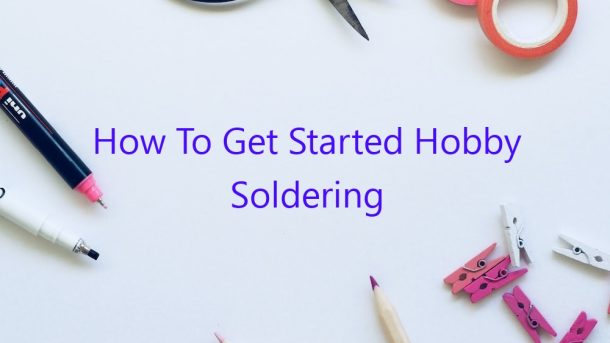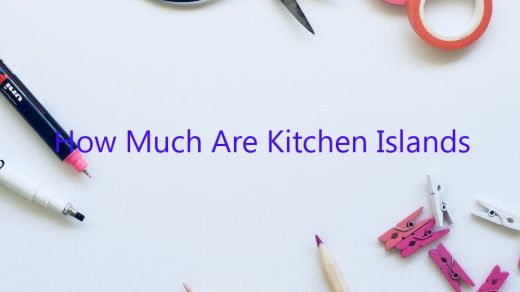solder
soldering
hobby soldering
1. Preheat your solder
Before you start, it’s important to heat up your solder. Doing this will make it flow more easily and create a stronger joint. To do this, place the solder near the object you’re soldering and heat it up with your soldering iron.
2. Clean the surfaces to be soldered
It’s important to make sure the surfaces you’re soldering are clean. Use a wire brush or some sandpaper to remove any dirt, grease, or oxidization.
3. Apply flux
Flux is a substance that helps the solder flow more easily and create a stronger joint. Apply a small amount of flux to the surfaces you’re soldering.
4. Apply the solder
Once the surfaces are clean and fluxed, apply the solder to the joint. You can use a solder paste, or just place the solder directly on the object.
5. Solder the joint
Once the solder is in place, use your soldering iron to heat the joint up and melt the solder. Hold the iron steady and don’t move it around. Apply pressure to the joint to help the solder flow.
6. Inspect the joint
Once the solder has cooled, inspect the joint to make sure it’s strong and looks good. If it doesn’t look good, you can re-solder it.
Contents
Can I teach myself to solder?
Can I teach myself to solder?
Yes, you can! Soldering is a skill that can be learned relatively easily, and with a little practice, you can become a pro at it.
There are a few things you’ll need to get started:
– Soldering iron
– Solder
– Flux
– Safety gear (gloves, goggles, etc.)
Once you have those things, it’s time to get started. Here are a few tips to help you learn how to solder:
1. Choose the right solder. There are many different types of solder available, and not all of them are suitable for beginners. Choose a solder that is easy to work with, such as a 60/40 or 63/37 lead solder.
2. Use the right temperature. The ideal temperature for soldering is around 350 degrees Fahrenheit. If your solder is too hot or too cold, it will be difficult to work with.
3. Use the right amount of solder. When you’re first starting out, it’s best to use a little bit of solder rather than a lot. Too much solder can make the joint difficult to work with.
4. Use the right tool. A soldering iron is the tool you’ll use to melt the solder. Make sure you use the correct size and type of soldering iron for the job.
5. Keep your soldering iron clean. A clean soldering iron will produce better results. Use a damp sponge to clean the iron’s tip between soldering joints.
6. Practice, practice, practice! The best way to learn how to solder is to practice. Try different types of joints and projects, and learn from your mistakes.
With a little practice, you’ll be able to solder like a pro!
Can soldering be a hobby?
Can soldering be a hobby?
Soldering is the process of connecting two metals by melting a filler metal, called solder, between them. It is a very common process in electronics and is used to create electrical connections. Soldering can also be a hobby, and there are a few things you need to know before you get started.
The first thing you need to know is the types of solder. The most common type of solder is called lead solder, and it contains a small amount of lead. There is also lead-free solder, which does not contain any lead. You need to use the right type of solder for the project you are working on.
The second thing you need to know is the type of soldering iron you need. The most common type of soldering iron is called a soldering station. It contains a soldering iron and a heat sink. There are also soldering irons that are powered by batteries or a USB port. You need to use the right type of soldering iron for the project you are working on.
The third thing you need to know is how to solder. The most common way to solder is to use a soldering iron. First, you need to tin the end of the solder wire. To do this, hold the solder wire against the soldering iron and wait until the solder wire is hot. Then, hold the solder wire against the metal you want to solder and wait until the solder wire is hot. When the solder wire is hot, the metal will start to melt and the solder will flow between the two metals.
The fourth thing you need to know is how to use a soldering iron. First, you need to plug in the soldering iron and wait until it is hot. Then, hold the soldering iron against the metal you want to solder and wait until the solder wire is hot. When the solder wire is hot, the metal will start to melt and the solder will flow between the two metals.
The fifth thing you need to know is how to clean a soldering iron. First, unplug the soldering iron and wait until it is cool. Then, use a damp cloth to clean the soldering iron. Be sure to clean the soldering iron every time you use it.
The sixth thing you need to know is how to store a soldering iron. First, unplug the soldering iron and wait until it is cool. Then, use a damp cloth to clean the soldering iron. Be sure to clean the soldering iron every time you use it. Finally, store the soldering iron in a safe place.
How do I learn basic soldering?
There are a few things you need to know before learning how to solder. Soldering is the process of joining two metals by melting a filler metal (solder) between them. It is commonly used in electronics, metalworking, and jewelry making.
The most important thing to remember when soldering is to not heat the solder too much. If it gets too hot, it will melt the metal you are trying to solder and it will not hold. You also want to make sure the two pieces of metal are clean and free of any oxidation, because the solder will not stick to oxide.
The easiest way to learn how to solder is by using a soldering iron. Soldering irons come in different shapes and sizes, but they all work basically the same. They have a metal tip that heats up when you plug them in, and you use this tip to melt the solder.
When using a soldering iron, you want to make sure the solder is touching the metal and the iron is touching the solder. You then use the iron to heat the solder until it melts. Once the solder has melted, you can use it to join the two pieces of metal.
It can be a little tricky to get the hang of soldering at first, but with a little practice, you will be able to solder like a pro!
How do you solder for the first time?
Soldering is a process of joining two metals by melting a filler metal (solder) between them. It is usually done to create a permanent joint. The most common application of soldering is in making electrical connections.
Soldering is not as difficult as it may seem. With a little practice, you can solder effectively and produce quality joints.
In this article, we will discuss the basics of soldering, including the tools and equipment you need, the types of solder, and the techniques you need to know.
Tools and Equipment
The basic tools and equipment you need for soldering are as follows:
– Soldering iron
– Soldering stand
– Soldering paste
– Soldering flux
– Wire cutters
– Wire strippers
Soldering irons come in a variety of shapes and sizes. The most important factor to consider when choosing a soldering iron is its wattage. The higher the wattage, the more heat the soldering iron will generate. A 25-watt soldering iron is a good starting point.
A soldering stand is not essential, but it is a good idea to have one. A soldering stand will help to keep your workbench clean and organized.
Soldering paste is used to help the solder flow smoothly between the two metals being joined. Soldering flux is used to clean the surfaces of the metals and to help the solder adhere to the metals.
Wire cutters and wire strippers are used to cut and strip the wire.
Techniques
There are a few basic techniques you need to know for soldering. They are as follows:
– Clean the surfaces of the metals to be joined. The solder will not adhere to the surfaces if they are dirty. Use a wire brush or sandpaper to clean the surfaces.
– Apply a thin coat of solder paste to the surfaces.
– Apply a thin coat of flux to the surfaces.
– Place the soldering iron on the joint and heat it until the solder melts.
– Apply the solder to the joint and allow it to flow into the joint.
– Allow the solder to cool and then inspect the joint.
If the solder does not flow into the joint, you may need to apply more heat. If the solder flows too much, you may need to apply less heat.
It is important to allow the solder to cool properly so that the joint will be strong and durable.
That’s all there is to it! With a little practice, you will be able to solder effectively and produce quality joints.
What are the 3 basic principles of soldering?
Soldering is a process of joining two metals by a filler metal. The three basic principles of soldering are:
1. The metals to be joined must be of the same type and have a similar melting point.
2. The surfaces to be joined must be clean and free of oxides.
3. The solder must have a lower melting point than the metals being joined.
Is soldering harder than welding?
Welding and soldering are two very different processes that are often confused. They are both used to join two pieces of metal together, but the methods and results are quite different. So, is soldering harder than welding?
The short answer is no, soldering is not harder than welding. However, the two processes have different applications, and one may be better suited for a certain job than the other. Let’s take a closer look at each process.
Welding is the process of using heat to join two pieces of metal together. The heat is applied to the pieces of metal until they reach their melting point, and then they are joined together. This process can be used to join two pieces of metal together permanently, or to create a weld joint that can be easily broken apart.
Soldering, on the other hand, is the process of using heat to join two pieces of metal together, but using a solder joint. A solder joint is a thin piece of metal that is melted and used to join two pieces of metal together. Soldering is often used to join two pieces of metal together that need to be attached temporarily, or that need to be able to be taken apart easily.
So, which process is better for a particular job? Welding is often used to join two pieces of metal together permanently, while soldering is often used to join two pieces of metal together temporarily. Welding is also better for larger pieces of metal, while soldering is better for smaller pieces of metal.
What are 3 typical soldering mistakes?
There are three typical soldering mistakes that people make: not enough solder, too much solder, and bad solder joints.
Not enough solder can cause a connection to fail. When there is not enough solder, the connection can become brittle and break.
Too much solder can also cause a connection to fail. When there is too much solder, the connection can become too thick and not allow the current to flow.
A bad solder joint is when the solder is not properly melted and joins the two pieces of metal together. A bad solder joint can cause a connection to fail.




